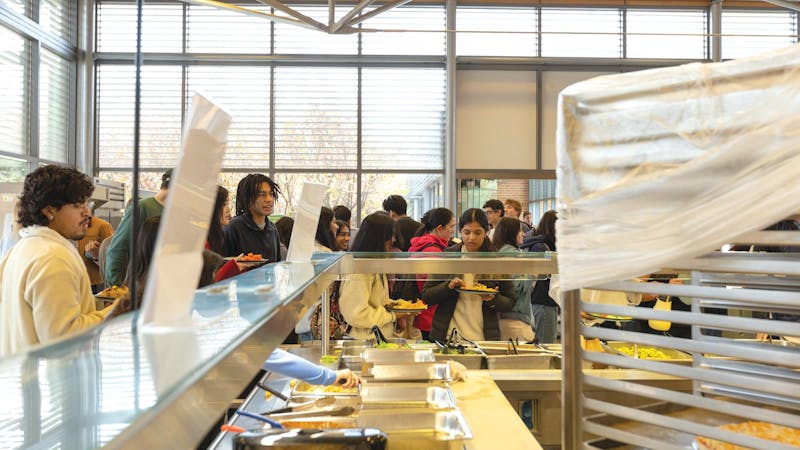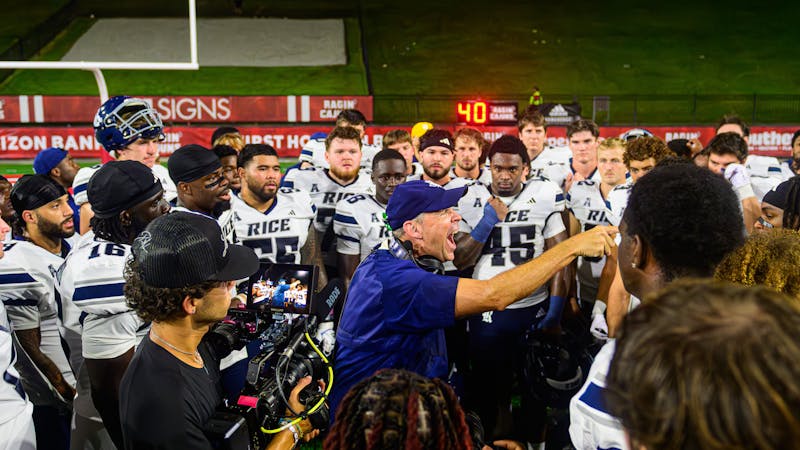Solar Decathlon team aims to create sustainable home
This year, Rice's Solar Decathlon team is turning a house into a home. Their solar-panel powered house has been four years in the making, and in October it will compete in a national competition in Washington, D.C. before being donated to a family here in Houston.The Department of Energy accepts proposals from 20 teams internationally every two years to participate in the Solar Decathlon competition, displaying the exhibitions of new energy-efficient technologies and sustainable designs on the Mall in Washington DC.
After the competition, most of the houses, which may cost up to $1.6 million each, are dismantled soon after they are put on display, according to the Rice team's communication group lead Allison Elliot.
In an effort to avoid the house's eventual dismantlement, the Rice team's house will belong to a client of Project Row Houses, a Houston nonprofit that provides public art, community support and shotgun-style home preservation assistance in the Third Ward. Shotgun style houses are a single-story housing design where the rooms are laid out in a linear fashion.
Architecture graduate student and Rice's team architecture group lead David Dewane, who started the Texas A&M University Solar Decathlon team with his wife during the competition's last session, said design decisions on the Rice house were enhanced by the team's primary commitment to building an appropriate house for Houston residents.
"I think it's really easier to be successful if you win a competition by setting your own terms," he said. "Also, it'd be nice to have the family's pictures in the house on Washington."
Rice became involved in Solar Decathlon when Wiess College senior Roque Sanchez saw an article about the competition in an issue of Popular Mechanics. Sanchez, who is now the overall student leader on the project, approached the civil engineering department to lead a one-credit class about Solar Decathlon the spring of his freshman year.
"It's hard to believe that it's actually happening," Sanchez said. "[The process began] from trying to get people to have an interest and begging faculty to support us, to applying for club status, to getting more recognition from the university. Now that we're getting sponsorships and have a house half-way done, it's sort of surreal."
Through the semesters, the group maintained many of its original 25 students and submitted a proposal to enter the competition in December 2007 to Rice's Office of the President and the Department of Energy.
"I like that it's students of different disciplines working on one goal," Elliot, a Wiess junior, said of the project. "My favorite part of the project is that our house is going to go back to the community, that people are actually going to live in it, and the fact that solar doesn't have to be something for one kind of person - that it's something attainable for all people."
Aside from its future as a family home, the Rice house's design bears weight on research in affordable housing and renewable energy. Sanchez added that when the house is connected to the grid both at Rice and on the Mall, it will actually be feeding electricity back into the system. Over the course of a year, the house is expected to reach net-zero on energy costs, hence the house's catchy name: Zerow. A house that inevitably gives back the electricity it consumes holds potential for many homeowners looking to save money in the long-term, especially in cities like Austin, Texas, where residents are reimbursed for any energy their house contributes to the power grid, Sanchez said.
The team chose to build the house as modestly as possible, a decision which Sanchez said the group was grateful for after a recent meeting in Washington DC. At that meeting, many groups expressed their difficulty in obtaining sufficient sponsorships due to the economic downturn.
School teams receive $100,000 from the Department of Energy over two years, but since the team cannot use government funding on physical materials, they are seeking additional sponsors is part of the competition. The Rice club received $30,000 from a Rice Faculty Initiative Grant and several other in-kind donations for components such as a solar-heated hot water system and the photovoltaic panels themselves. However, Sanchez said the club still needs to raise an additional $75,000.
The Rice house itself will cost under $100,000, according to Solar Decathlon faculty sponsors Danny Samuels and Nonya Grenader, though there are many other costs associated with the project.
"Even though that sounds like a lot for a house, really it is a body of research," Samuels said. "We'd like it to be able to be replicated."
At the Mall competition, the team will have one week to assemble the house, one week for public tours, and four days for disassembly. Two panels of juries will assess the house based on both subjective and objective standards, from market viability and architectural design to the house's ability to heat water to the correct temperature and hold a good dinner party, Sanchez said.
Part of the challenge and cost, transporting the house from Houston to Washington, D.C., will inevitably be made easier thanks to the row house design built for Houston heat.
"[The design] makes for great ventilation during the summer months, and this house is going to be shipped as a single unit, which is also something that gives us a leg up on the competition," Sanchez said, adding that some groups handle as many as seven separate pieces during shipping.
The team began construction on the house November of last year, adjacent to the Construction Information Center at Alumni Drive and the Outer Loop. According to Sanchez, the team hopes to have finished all major construction by commencement to allow families an opportunity to tour the finished product. Public tours will continue on the Mall, and in its two weeks there, the house will have nearly 120,000 visitors, Elliot said.
The design of the house, developed by engineering and architecture students on the team, features a wet core and light core porch, elements that contribute to the efficiency and livability of the space.
The wet core is a pre-fabricated central system containing all of the main wiring and mechanical components of the solar-powered house. It holds promise for building cheaper houses in the future by allowing contractors to bring in the self-contained, pre-assembled unit and build the comparatively inexpensive house frame around it, Dewane said.
"The light core [house's porch set off by glass windows] is a device that sort of serves two purposes: one is psychological, that you can create a projection of your indoor living space but you aren't using energy to cool it," Dewane said. "And when it is nice, you can open the doors and it becomes a literal part of your living space."
Both Samuels and Grenader, director and assistant director of the Rice Building Workshop, respectively, began a relationship with the Project Row Houses organization in 1997 as a way to expose architecture students to the real concerns of design in a community. Solar Decathlon is just the latest extension of that relationship.
"We hear from students all over the world who have been involved," Grenader said. "It makes it clear that there is a life in a building that is beyond the structure."
An exhibit about the Solar Decathlon team's project, which opened Thursday, is located in the Rice Art Gallery. The team will continue preparing for the competition through the summer and make minor adjustments before the trip.
More from The Rice Thresher

Over 1,000 students petition against new meal plan
When Konstantin Savvon opened the Housing and Dining email announcing the new unlimited meal plan, he was instantly concerned about the impact on off-campus students like himself.

Rice football wins season opener under new coach
For the first time since 2018, Rice football opened its season with a victory. Scott Abell was soaked with yellow Powerade following a 14-12 win on the road Saturday against the University of Louisiana at Lafayette, which won 10 games and made it to the Sun Belt Conference championship last season.

Acting like an athlete: Rice basketball alum takes on Broadway
Underneath Chadd Alexander’s Broadway costume, there’s ankle tape and wrist braces — same protective gear he wore as a walk-on basketball player at Rice, though now he’s performing eight shows a week in the ensemble of “Harry Potter and the Cursed Child” instead of running conditioning drills in Tudor Fieldhouse.

Please note All comments are eligible for publication by The Rice Thresher.